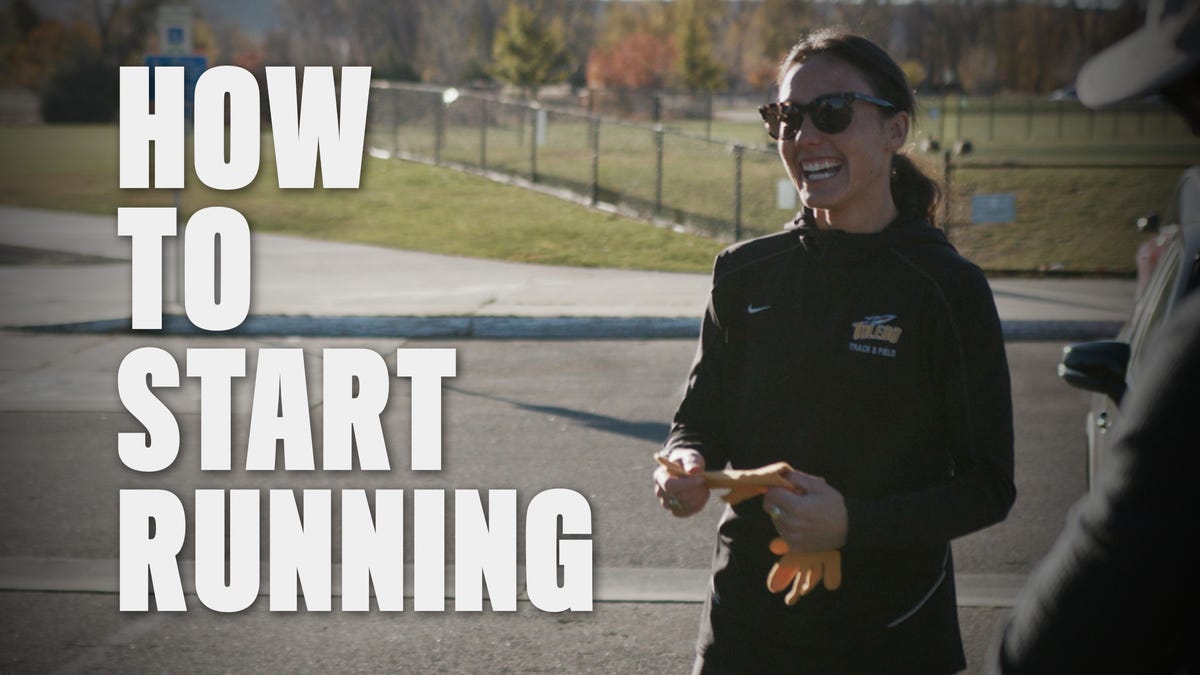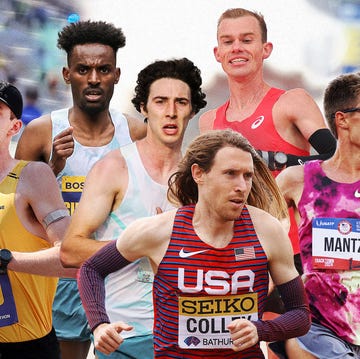“Tell Emily ... she’s not far behind Eszter.”
These were the words Petter Engdahl, the 29-year-old Swedish ultrarunner, managed to utter at mile 50 of the Western States 100 on June 29, while his crew emptied his shoes of rocks and tended to a bloodied elbow.
Engdahl, despite taking a brutal tumble early on in the race right after Lyon Ridge—“It looked like he did a somersault,” said Nora Serres, his partner and fellow runner—was more focused on the success of his teammate, Emily Hawgood, than his own.
Trail running isn’t commonly thought of as a team sport, but my 17-hour day crewing with Adidas Terrex’s elite ultrarunner team had me reconsidering.
While runners primarily traverse the 100 miles from Olympic Valley to Auburn, California, alone, an elite runner’s team of pacers and crew, many of whom are top runners themselves, ultimately makes the day come together.
Runners at Western States can meet their crew at 10 designated stops along the course, some accessible by passenger car, some by shuttle, and a few only accessible by foot. Pacers can join runners at five different spots, and while they can run alongside their designated athlete, they are not allowed to carry any runner’s food, water, or supplies—instead, focusing on the mental support that becomes a requirement during such a grueling effort.
“All of our teammates are very dialed. If they’re feeling good, I keep the energy up,” Jeshurun Small, an Adidas Terrex athlete who recently finished fourth overall at the Transvulcania La Palma Island 100K in Spain, told me. “If they’re losing it, I’m reminding them why they’re here. Many people get into the mentality of thinking, ‘I’m not feeling good, it’s mile 60, and I have so far to go.’ They forget why they’re there, so I have to tell them they deserve to be there.”
My day with the crew started at mile 30, Robinson Flats, where our five runners—Engdahl and Hawgood, Daniel Jones, Lin Chen, and Yngvild Kaspersen—began to feel the heat.
Engdahl’s fall just a few miles in had hurt his morale. Serres and Robert Muecke, the global sports marketing director for Adidas Terrex, rubbed sponges on his face while he shuddered under the ice water. Hawgood, the bubbly Zimbabwean known for her brilliant smile, cruised through quickly, while Lin, a Chinese runner who won the Hong Kong 100, the first race of the new World Trail Majors circuit, ate a few bites of a canned Chinese congee from her coach before continuing on her way.
Each aid station we met our runners at continued with a rhythm: We set up trays and tables, laid out a buffet of various sugars and carbs, filled bandanas with ice, soaked sponges, and had fresh shoes and socks at the ready.
Then, we waited.
As our runners came in, crews worked efficiently like a NASCAR pit stop, untying shoes, removing socks soaked with water and sweat, filling ice buckets, and most importantly, listening to exactly what the runners wanted and needed at that moment and tailoring their offerings entirely—crew bags held everything from baby powder to Pringles to Coca-Cola.
At my next stop, mile 62, a crew station in the small town of Foresthill, pacers warmed up their legs and prepped themselves for an entirely different job: accompanying a runner through some of the most challenging parts of the race.
Engdahl entered this station with a hint of a smile on his face. “It’s starting to get fun,” he told Serres before fist-bumping with Eric LiPuma, his pacer, as they set off for just over 17 miles together.
LiPuma, 31, a UTMB and Canyons 100K veteran from Vermont, was running his first-ever leg of Western States, entering miles of unpredictability in which he was to focus solely on Engdahl’s needs—and remind him that there’s still a lot that can change over the course of 40 miles. “You can always turn a bad day into a good day at this type of race,” LiPuma told me.
Hawgood picked up her pacer, Small, a Colorado native with a bright smile that mirrors her own, here too, and runners and pacers alike looked genuinely thrilled to see each other.
While runners are laying it all on the line, pacing a leg of Western States is a regular run for the pacers, who use it both as training and course research for future years, but most importantly, an opportunity to briefly play sports psychologist or court jester—depending on the day.
“You really have to know what your runner is looking for at that moment,” Small said. “Are they joking and happy? Or do they just need someone to run with them or tell them they can do it?”
It’s this empathy that sets the tone for the day. While my own feet ached—there’s not a lot of sitting at Western States, even if you’re not a runner—it seemed silly even to register that pain with 375 runners out there upwards of 24 hours.
From Foresthill, a fast-moving fire unexpectedly interrupted our plans to stop at Rucky Chucky, the famed mile 78 river crossing, leaving some runners without their designated pacers or crew. The race pivoted, too, at this moment, allowing any unaffiliated runner at the station to join another as a pacer, understanding the support that an athlete may need in the race’s final miles.
From there, we adjusted our game plan, instead hiking into the Painted Rocks aid station at mile 94.3. Here, a smaller aid station set in a rolling field just outside of the town of Cool, the top runners’ crews set up the requisite ice buckets and sponges while volunteers prepared fresh fruit, soda, and hot food for runners who would later come through without their own support crews.
Jim Walmsley, who ultimately won the race in 14:13:45, just a few minutes slower than his 2019 course record of 14:09, rolled through quickly after we arrived. Shortly after that came Daniel Jones, a New Zealand Terrex athlete who had been playing cat and mouse in the top five all day.
Jones, accompanied by his pacer Eli Hemming, was focused and wanted to know where he was in relation to the top three. This is another crucial job of the pacers and crew at this level: knowing if your runner is in “hunting mode,” says LiPuma, and being able to relay who the immediate competition is, how far away they are, and passing it on—or in some cases, not — back to to the athlete where their competition is. (I overheard one top male runner, flagging in the heat, ask where the next, extremely close, runner was, to ultimately be shooed off by his crew. “Far away. Run!”)
Of course, the best crew in the world can’t save the world’s best runners from simple bad luck. Despite her strong start, Chen dropped at the Rucky Chucky river crossing, failed by a giant blister. Meanwhile, Engdahl, despite the rocky start, found motivation from his miles with Hawgood and his pit stops, relishing in cold (but not ice, as he demanded) water dumps and pep talks from Serres and Muecke.
Ultimately, Engdahl’s second star pacer of the day wasn’t LiPuma but Hawgood, with whom he traded placings throughout the day and ran in tandem for many miles across the Sierra Nevada Mountains. Engdahl, who was at one point as low as 19th overall, rallied in the race’s later stages, finishing 13th in 16:22:36.
And when Hawgood crossed the finish line, 26 minutes after Engdahl, placing fourth among the women’s field, Engdahl, bloodied, battered, and with feet that one crew member called “morgue-worthy,” got up, legs quaking, and slowly crept over to embrace Hawgood.
“You saved my race,” he told his teammate. “Those miles I shared with you were the most special.”
Laura Ratliff is a New York City-based writer, editor, and runner. Laura's writing expertise spans numerous topics, ranging from travel and food and drink to reported pieces covering political and human rights issues. She has previously worked at Architectural Digest, Bloomberg News, and Condé Nast Traveler and was most recently the senior editorial director at TripSavvy. Like many of us, Laura was bitten by the running bug later in life, after years of claiming to "hate running." Her favorite marathon is Big Sur.




















